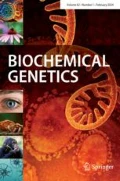Abstract
Glutamine synthetase I (ZZZl-glutamate:ammonia ligase, ADP forming; EC 6.3.1.2) was purified from Drosophila melanogaster larvae. The complete enzyme has an apparent molecular weight of 380,000. The subunit of the active enzyme has an apparent molecular weight of 43,000 after sodium dodecyl sulfate (SDS)-polyacrylamide gel electrophoresis. Routine preparations yield enzymes which have at least another polypeptide component of apparent molecular weight of 64,000. Several factors suggest that the 64,000-dalton polypeptide might be a transformation product of the 43,000-dalton subunit which occurs in association with enzyme inactivation. Distinct from its protein subunit, from pure glutamine synthetase I a material can be extracted which can be labeled with 32P-labeled γ-ATP using polynucleotide kinase. After alkaline hydrolysis the majority of the radioactivity is recovered as 5′2′ and 5′3′ ribonucleotide diphosphates, and after venom phosphodiesterase digestion as 5′ ribonucleotide. We therefore conclude that the native glutamine synthetase I enzyme contains, or at least is reproducibly associated with, an RNA component. Several characteristics of the labeled material indicate that the RNA is small in size and is bound to polymer molecules different from RNA.
Similar content being viewed by others
References
D'Alessandro, A., Ritossa, F., and Scalenghe, F. (1977). Cytological localization of the ebony locus in Drosophila melanogaster. Dros. Inform. Serv. 5246.
Laemmli, U. K. (1970). Cleavage of structural proteins during the assembly of the head of bacteriophage T4. Nature 227680.
Lowry, O. H., Rosebrough, N. J., Farr, A. L., and Randall, J. R. (1951). Protein measurement with the Folin phenol method. J. Biol. Chem. 193265.
Martin, R. G., and Ames, B. N. (1961). A method for determining the sedimentation behaviour of enzymes: Application to protein mixtures. J. Biol. Chem. 2361372.
Reijenders, L., Sloof, P., Sival, J., and Borst, P. (1973). Gel electrophoresis of RNA under denaturing conditions. Biochim. Biophys. Acta 320324.
Richardson, C. C. (1965). Phosphorylation of nucleic acid by an enzyme from T4 bacteriophage-infected Escherichia coli. Proc. Natl. Acad. Sci. USA 54158.
Scalenghe, F., and Ritossa, F. (1976). Controllo dell'attività genica in Drosophila: Il puff al locus ebony e la Glutamina Sintetasi 1. Atti Acad. Naz. Lincei 13441.
Scott, S. N., and Ingle, J. (1973). The genes for cytoplasmic ribosomal ribonucleic acid in higher plants. Plant Physiol. 51667.
Shapiro, B. M., and Stadtman, E. R. (1970). Glutamine synthetase (Escherichia coli). In Tabor, H., and Tabor, C. W. (eds), Methods in Enzymology Academic Press, New York, Vol. 17, p. 910.
Silberklang, M., Gillum, A. M., and Rajbandary, U. L. (1979). Use of in vitro 32P labeling in the sequence analysis of nonradioactive tRNAs. In Moldave, K., and Grossman, L. (eds.), Methods in Enzymology Academic Press, New York, Vol. 59, p. 58.
Spradling, A., Pardue, M. L., and Penman, S. (1977). Messenger RNA in shocked Drosophila cells J. Mol. Biol. 109559.
Author information
Authors and Affiliations
Rights and permissions
About this article
Cite this article
Caizzi, R., Ritossa, F. The enzyme glutamine synthetase I of Drosophila melanogaster is associated with a modified RNA. Biochem Genet 21, 267–285 (1983). https://doi.org/10.1007/BF00499138
Received:
Revised:
Issue Date:
DOI: https://doi.org/10.1007/BF00499138




